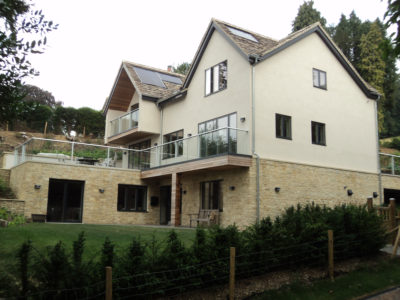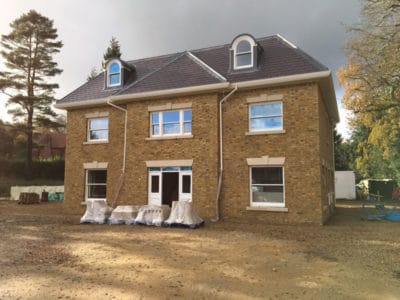Building Basements with ICF
Basements are a great way of increasing living space in new build homes, especially where options for going up or out above ground are limited.
We’ve been building below ground for centuries, so there’s nothing new with the concept, but the potential problems with subterranean rooms, particularly water ingress, have always been with us.
What has changed is the choice of materials with which to construct a basement from. Of these, insulated concrete formwork (ICF) is the new kid on the block and has rapidly become a popular option for self builders − especially underground. So what is this product and why does it work so well for subterranean storeys?
What is ICF?
ICF is a system of hollow blocks usually constructed from either expanded polystyrene (EPS) or extruded polystyrene (XPS).
Considering different build systems?Once you have a plot, the next key decision is which build route is best for your project. Timber frame, ICF, brick, masonry, hemp, SIPs, CLT or steel frame? All have their benefits and downsides. At Build It Live you can speak to experts who specialise in building with these different systems and who can help you choose the best choice for you. Explore all the options, all in one place – only at Build It Live. Build It Live takes place three times a year in Kent, Oxfordshire and Exeter. The next show will be on 8th and 9th June 2024, in Bicester, Oxfordshire. Claim a pair of free tickets today and start planning your visit. |
These are castellated so that they fit together one on top of the other to form a hollow wall. The cavity is then filled with poured concrete that, once cured, makes a solid structure that is insulated on both sides and is virtually waterproof.
I say virtually because there will be wafer thin gaps between the blocks, and one can never rule out voids or honeycombing in the poured concrete. This means that when used in a basement, some additional waterproofing, or tanking, is necessary.
Why is ICF good for basements?
There is a number of options for basement construction (see panel below) the most popular of which is poured in-situ concrete.
This involves creating a mould, or formwork, of the wall to be built using boards and timber – a process known as shuttering. Once the concrete has been poured and has cured, the formwork is removed, and you are left with the wall. It’s pretty labour intensive and time consuming.
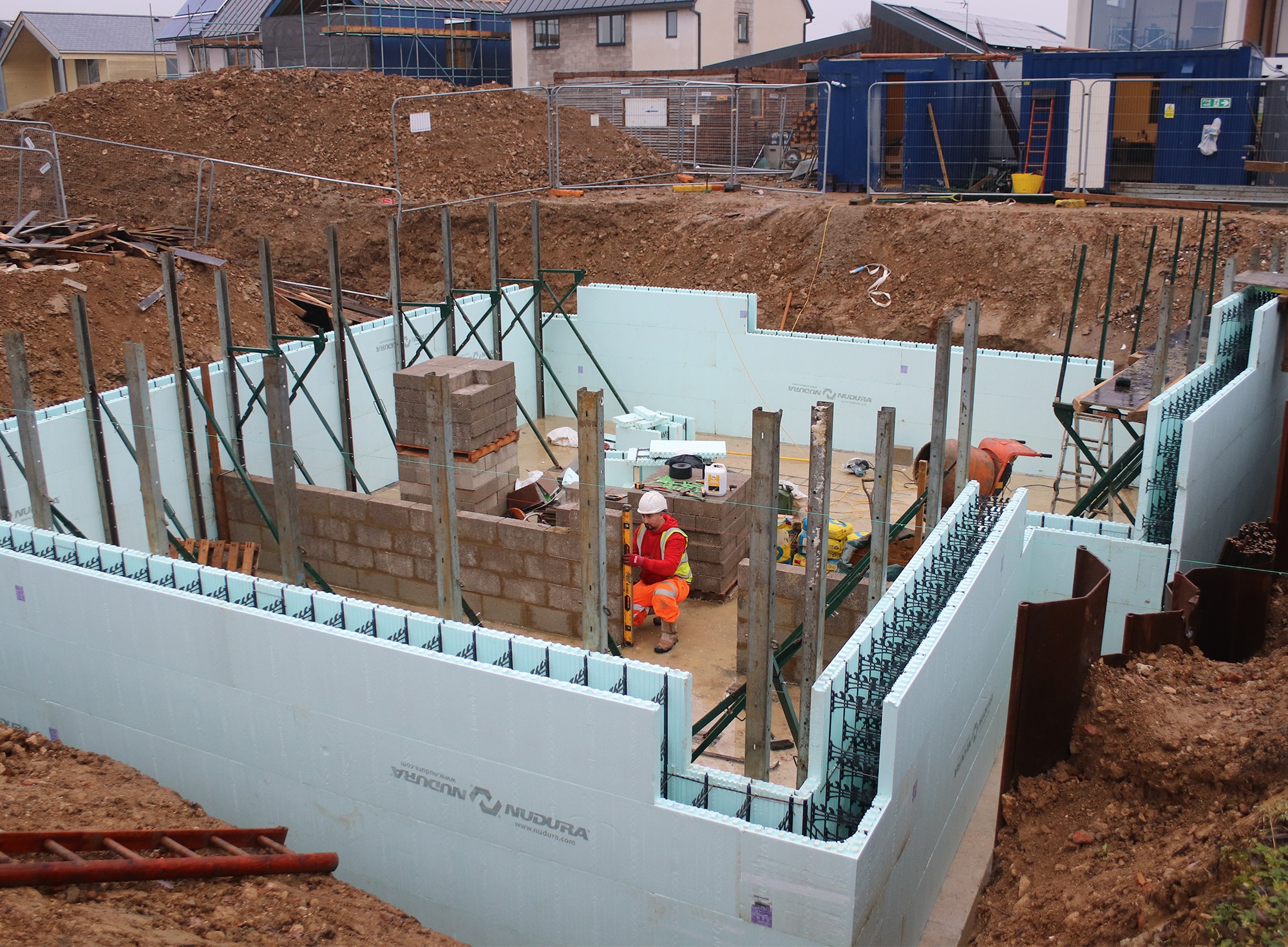
The basement at the Build It Education House has been constructed using ICF blocks from Nudura. The walls and internal blockwork went up in just a few days.
However, by using ICF, the block is the formwork and remains in place forever, reducing labour costs and shortening construction time dramatically. Pouring concrete in very cold conditions would normally be avoided, but by using ICF, the heat generated in the curing process is retained, making this solution a year-round option.
The way ICF is constructed means it is ideally suited to new build rather than retrofit schemes.
How does it work?
Any basement needs to be professionally designed and specified by a structural engineer trained in foundation construction. An ICF basement usually starts as an excavated hole with a concrete slab poured at the bottom that will become the lower storey floor.
The ICF walls are built up on the slab with special detailing to ensure the potential weak points at the junctions of floors, ceiling and corners are watertight. Hollow core slabs or a beam and block are laid on top of this, which become the ceiling of the basement and the ground floor of the property. Internal block walls or steels may be incorporated to support staircases or above-ground structures.
Is ICF waterproof?
This step is key because a basement is effectively a swimming pool in reverse – you are trying to keep water out, rather than in. Hydrostatic pressure, particularly in clay soils, can store up future problems that might not be apparent in the early stages of construction. Therefore, waterproofing must be done correctly. Rectifying mistakes in basements is potentially expensive and can also be disruptive so it has to be done right the first time.
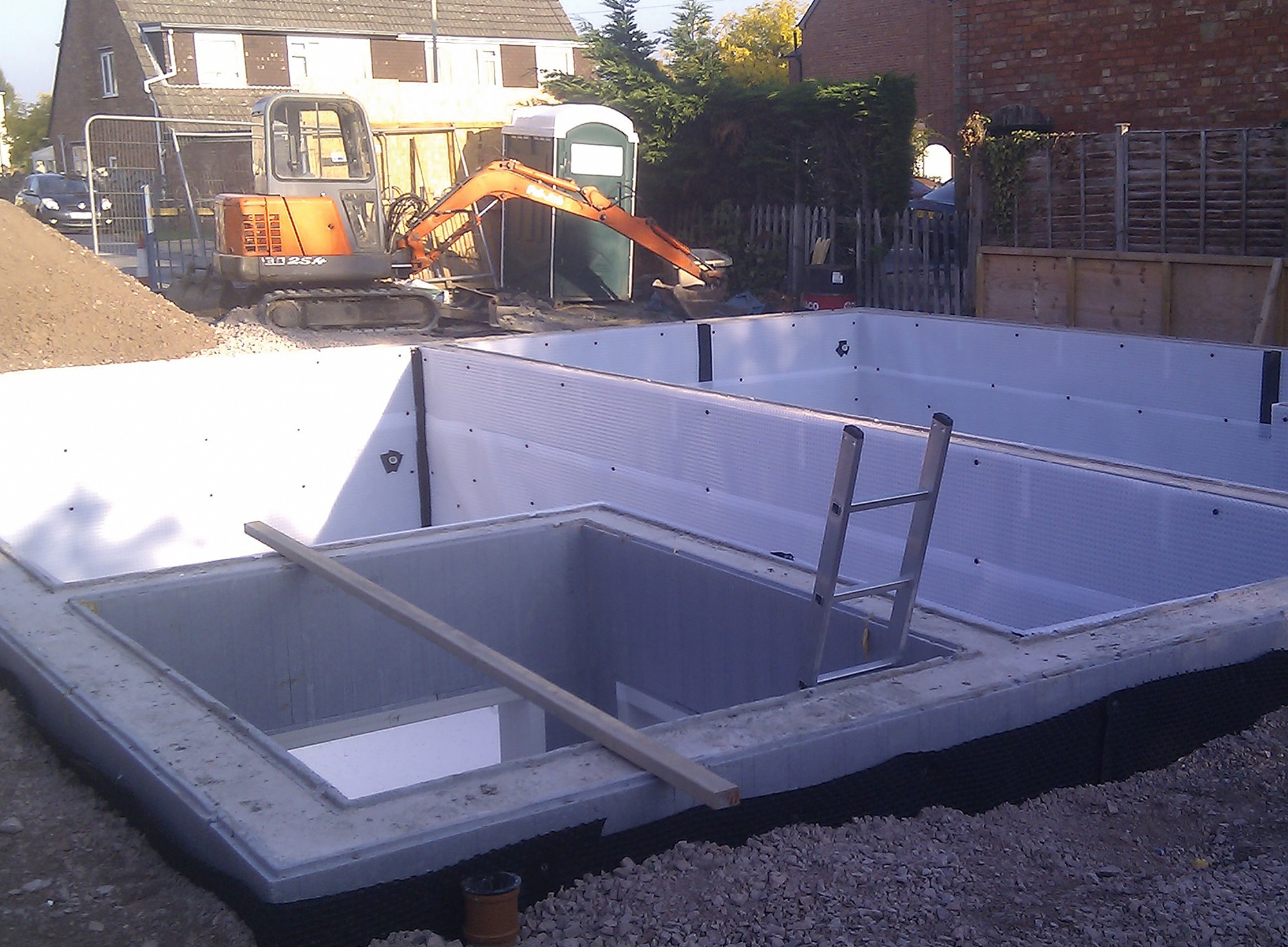
Polysteel warmer wall ICF blocks were used in this basement project
There are three main ways of doing this, each identified and managed through compliance with BS8102. You can tank the walls by applying a bitumen or latex barrier to the inside or outside partitions depending on access (known as Type A).
Alternatively you can waterproof the concrete by including admixtures that seal off the microporous holes found in the untreated pour (Type B). The other option is to assume that some leakage will happen.
In this instance you manage water ingress by installing drained protection. This allows water to fall behind a waterproof membrane to be channelled into a sump where it can be pumped out automatically when a certain level is reached (Type C).
Despite the intrinsic waterproof nature of ICF, because of the potential cost of fixing subsequent leaks, a belt and braces approach is usually best and at least two of these methods will be specified just to be safe.
Is it a DIY job for a self builder?
I’d normally encourage anyone to have a go if they are competent and confident enough to do a good job, but basements are one area where I recommend leaving the work to the experts. If you undertake the task yourself and it fails at some future point, you have no guarantees or warranties to fall back on.
Construction and waterproofing may be carried out by a single contractor or could be done by separate companies, but either way, they will know what they are doing and will ensure things are done right.
What else is needed for a basement?
All houses are going to require foundations, and some will need expensive engineered solutions such as piling. Usually, this is an extra cost which won’t be reflected in any final valuation of your home.
However, if a basement is designed into the foundation solution, some or all of the additional cost can be recovered in the form of usable living space underground.
Some proprietary tanking products are not suitable for ICF as they do not properly adhere to the blocks. Therefore, you must get the right waterproofing product specified. Similarly, the correct mix of concrete of the right ‘slump’ or consistency is vital.
The correct pouring method needs to be considered to ensure that there are no voids or honeycombing. If there are any pour joints in the concrete from undertaking the work in stages, these should be sealed using a tanking slurry between lifts.


































































































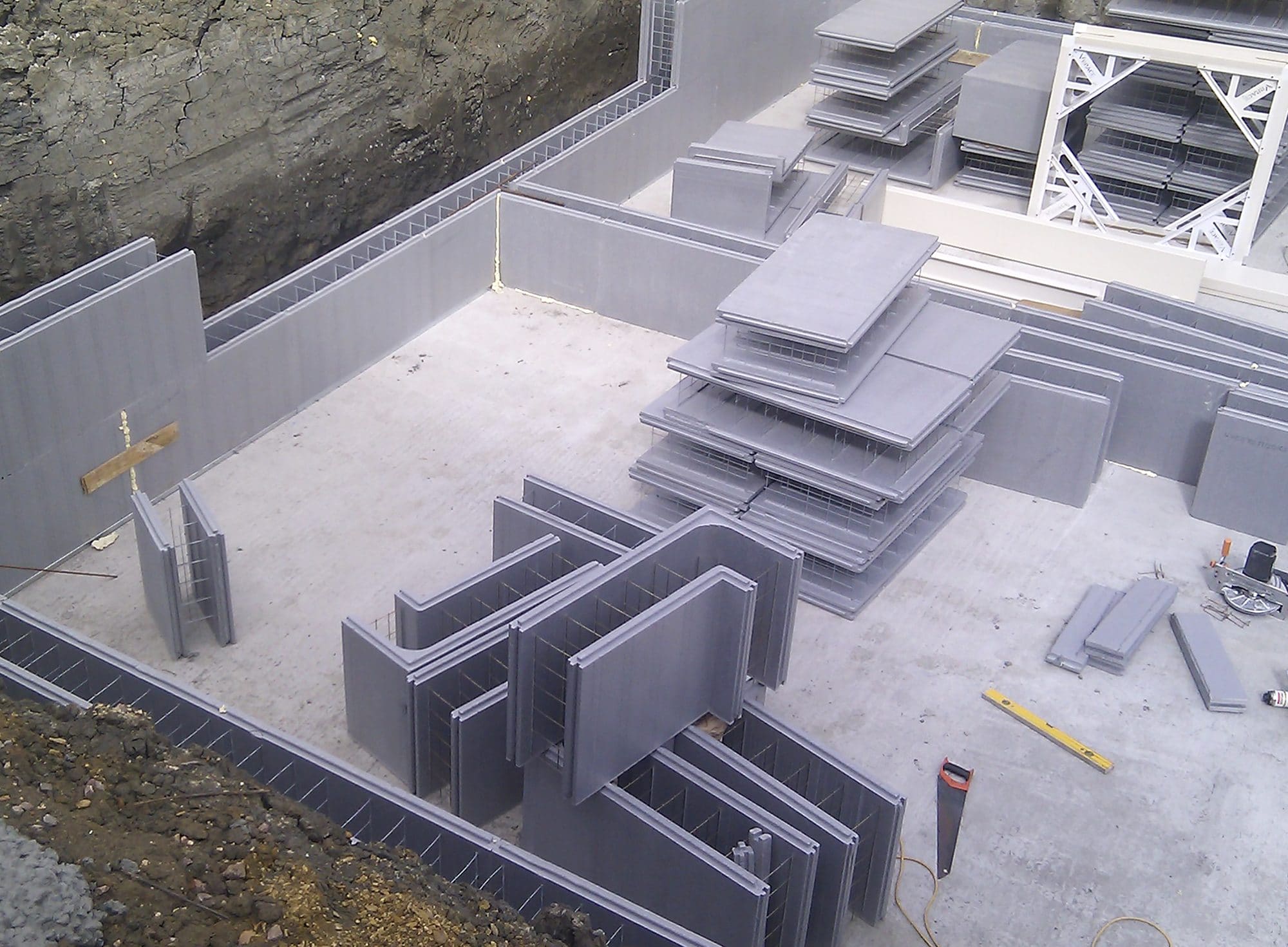
 Login/register to save Article for later
Login/register to save Article for later





